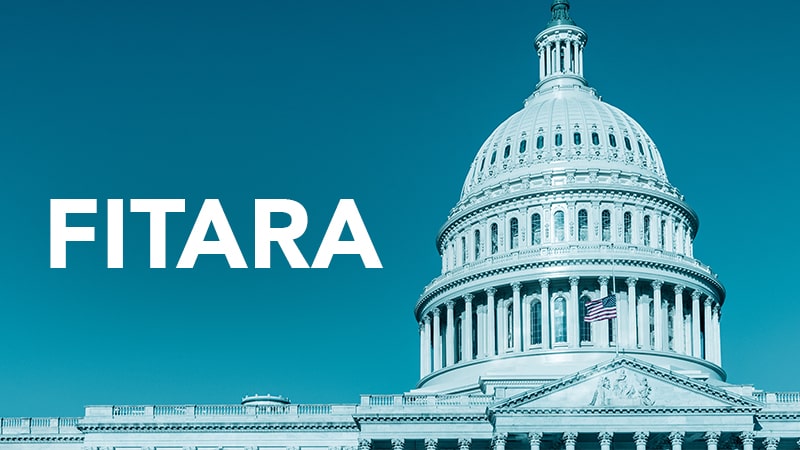
Federal agency grades were up sharply and nearly across the board on the latest edition of the FITARA Scorecard issued today by Rep. Gerry Connolly, D-Va., who is ranking member of the House Cybersecurity, IT, and Government Innovation Subcommittee and who compiles the scorecard with substantial input from the Government Accountability Office (GAO).
The semi-annual scorecard – which first debuted in 2015 – grades the 24 largest Federal agencies on their progress across a range of IT-related categories and has been credited by GAO with saving the Federal government billions of dollars since then.
The scorecard historically has been issued by the full House Oversight and Accountability Committee. However, the past few editions have been issued by Rep. Connolly’s office due to muted interest in the process from committee Republicans.
Top-Line Trends
The 18th edition of the scorecard issued today shows substantial – and in some cases dramatic – improvements across the 24 agencies that are graded.
As usual, the best way to make sense of the multicolored FITARA scorecard is to view the results on MeriTalk’s FITARA Dashboard.
In total, 18 of the 24 Federal CFO Act agencies saw their overall grades increase, while six of the agency grades were unchanged since the 17th edition of the scorecard issued in February. No agency received a lower grade this time around.
Because of the numerous sharp grading jumps on the latest scorecard, 13 of the 24 agencies now stand with ‘A’ grades on the latest scorecard, 10 agencies have ‘B’ grades, and only one agency – the Energy Department – has a ‘C’ grade.
By contrast, on the 17th edition of the scorecard, only one agency – the U.S. Agency for International Development (USAID) – earned an ‘A’ grade. Ten agencies had ‘B’ grades, ten had ‘C’ grades, and one agency had a ‘D’ grade.
Grading categories on the latest scorecard remained unchanged from the previous edition issued in February and include: agency CIO authority; CIO investment evaluation; cloud computing; Modernizing Government Technology Act; cyber; and transition from the older General Services Administration Networx communications services contract to the newer Enterprise Information Solutions (EIS) contract.
Many agencies that earned higher grades this time around did so by improving their scores in the cloud, cyber, and EIS transition categories.
The latest version of the scorecard also tracks agency performance in four other IT categories, but does not include results for those in its tabulations for overall agency letter grades.
Three of those categories – transparency and risk management, data center consolidation, and whether an agency CIO reports directly to an agency secretary or deputy – formerly were grading categories on the FITARA Scorecard, but were swapped out when most agencies began to achieve high grades and/or compliance with them. The fourth tracking category on the latest scorecard is cost savings and avoidances.
By the Letters
Here is a quick look at the gainers and steady grades on the 18th edition of the FITARA Scorecard:
18 Agencies Improved
- Commerce Department improved to ‘B’ from ‘C’;
- Defense Department rose to ‘A’ from ‘B’;
- Education Department jumped to ‘A’ from ‘C’;
- Health and Human Services vaulted to ‘A’ from ‘D’;
- Homeland Security improved to ‘B’ from ‘C’;
- Housing and Urban Development rose to ‘B’ from ‘C’;
- Interior Department improved to ‘A’ from ‘B’;
- Justice Department lifted to ‘A’ from ‘C’;
- Labor Department rose to ‘A’ from ‘B’;
- State Department jumped to ‘A’ from ‘D’;
- Transportation Department hopped to ‘B’ from ‘D’;
- Veterans Affairs improved to ‘B’ from ‘C’;
- Environmental Protection Agency rose to ‘A’ from ‘B’;
- General Services Administration vaulted to ‘A’ from ‘C’;
- NASA rose to ‘A’ from ‘B’;
- Office of Personnel Management jumped to ‘A’ from ‘C’;
- Small Business Administration improved to ‘B’ from ‘C’; and
- Social Security Administration rose to ‘A’ from ‘B’.
Six Agencies Hung Steady
The remaining six agencies maintained the same grade compared to the 17th edition of the scorecard issued in February:
- Agriculture Department with a ‘B’ grade;
- Energy Department with a ‘C’ grade;
- Treasury Department with a ‘B’ grade;
- National Science Foundation with a ‘B’ grade;
- Nuclear Regulatory Commission with a ‘B’ grade; and
- USAID with an ‘A’ grade.
